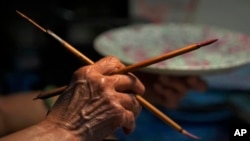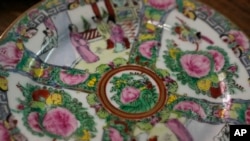Step into Yuetung Chinaworks, the last remaining hand-painted porcelain factory in Hong Kong, surrounded by a pile of tableware. Flower, fruit and animal motifs.
The third generation owner of the factory, Joseph Tso, and his small team are one of the few in Hong Kong who have mastered the traditional techniques of drawing "wide sea" or cantonal porcelain.

In this modern metropolis, few young people are willing to spend the time and effort needed to master crafting and work fully in the factory. It's a declining art-time.
“The business environment in Hong Kong is not suitable for labor-intensive industries,” says Tso. "Hong Kong's traditional handicraft industry is slowly declining. Eventually it will disappear."

From the nearby Chinese city of Guangzhou, Guanghai is characterized by its overpainting technique. The painter sketches the design on white porcelain, fills it with color using a fine brush, and then burns the work in a kiln.
Tso's grandfather founded a factory in Kowloon Walled City, Hong Kong in 1928. The factory has been famous for many years, with its delicate craftsmanship and custom-made tableware.
This factory is known for its canton rose porcelain painted with a pigment called "xihong" which means "western red". Its constituents include lead oxide, quartz and gold powder.

"Hong Kong's export sector was booming in the 1960s and 1980s, and many well-known department stores buy their products," Zo said. "Foreign trading companies will bring us business from (American) department stores."
Factories sometimes draw family crests on tableware for foreign customers.
Chris Patten, the last British governor before Hong Kong was returned to China in 1997, visited Yuetung Chinaworks to buy porcelain before returning to Britain.
This factory is an important part of Hong Kong's history, said Lim Wai Wai, founder of the Hong Kong Ceramic Research Association.
"The porcelain factory breathed at the same pace as Hong Kong's development," Lim said. "If it doesn't exist, it's an immeasurable loss."


